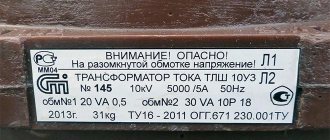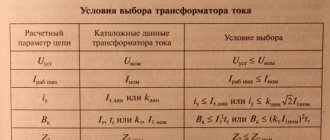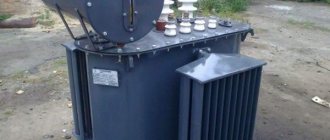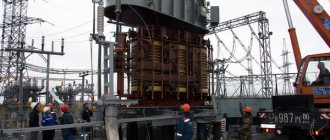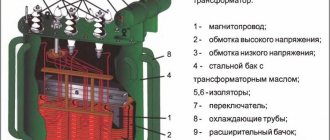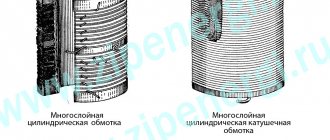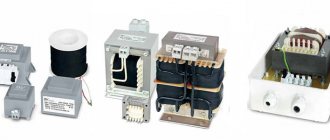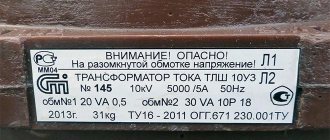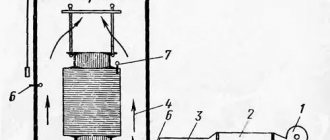A TMZ transformer is a device designed to operate in a three-phase network. Such equipment is used in industrial and household power supply circuits. The job of this type of transformer is to provide consumers with electricity with the specified parameters. Technical characteristics, decoding and description of parameters are presented below.
Peculiarities
TMZ power transformers have an oil cooling design. The substance inside circulates naturally. This is a relatively inexpensive device. Each manufacturer provides special protection in the TMZ type transformer. Oil is a flammable substance. Dry nitrogen allows you to prevent an emergency situation. The substance additionally protects the oil and prevents the coolant from coming into contact with air.
The nitrogen blanket prevents oxidation of the coolant due to humidity. This extends the life of the oil substance. Maintenance and repair of such transformers will need to be carried out much less frequently.
The cost of the equipment depends on the size and power. The manufacturer produces different standard sizes. Transformers TMZ 1000, 1600, 250, 630, 400, 2500, etc. are in great demand. The wide range of products presented allows you to purchase an installation that optimally suits the consumer’s requirements.
Technical characteristics of transformers TMZ 250, 400, 630, 1000, 1600, 2500 kVA
| Type/Power | Losses, kW | Current | Voltage | Overall dimensions of TMZ, mm | Weight, kg | |
| XX,% | Short circuit,% | |||||
| XX | short circuit | |||||
| TMZ-250 | 0,61 | 3,7 | 1,9 | 4,5 | 1200x730x1775 | 1230 |
| TMZ-400 | 0,9 | 5,5 | 1,8 | 4,5 | 1200x835x1780 | 1600 |
| TMZ-630 | 1,25 | 7,9 | 1,7 | 5,5 | 2012x1160x1825 | 2645 |
| TMZ-1000 | 1,9 | 12,2 | 1,7 | 5,5 | 2235x1220x1835 | 3615 |
| TMZ-1600 | 2,65 | 16,5 | 1 | 6 | 2255x1370x2320 | 4930 |
| TMZ-2500 | 3,75 | 26,0 | 0,8 | 6 | 2460x1600x2600 | 7045 |
Design
When considering the design description, a transformer device demonstrates a certain set of qualities. Features of operation are provided by the design of internal systems. Special radiators are used to cool the oil substance.
The magnetic drive is made of electrical steel. The design includes a switch. The windings are made of aluminum. The top of the tank has hooks for lifting the unit. There is a plug at the bottom for draining the oil and taking samples. The design includes a grounding bolt.
HV and LV terminals are provided at the ends. The insulators are made of porcelain. A special device allows you to control the oil level in the tank. There is a nitrogen cushion between the surface of the cooler and the cover.
The thermal switch measures the oil temperature. Instruments are provided to measure internal pressure in the tank. When 0.75 atm is reached, special protection is triggered. Gases are discharged from the device to the outside.
General information
The TM transformer has two windings. Devices 27-2500 kVA fall into this category. Technical information on the operation of the transformer provides a rated voltage of 6-35 kV. The device is used for indoor and outdoor installation in public power supply networks.
The transformer of the presented type has 5 stages of regulation. The operating instructions indicate that the adjustment range is ±2×2.5%. Switching can only be carried out in a de-energized state.
Designation structure
TMZ transformers have a specific designation structure. Marking allows you to identify the features of the device. The nomenclature may be as follows: TMZ-x/6(10)-U1(HL), where:
- T – circuits for a three-phase network.
- M – natural oil circulation.
- Z – protection of the cooler with dry nitrogen.
- x – rated power, kVA.
- 6(10) – power of the HV winding, kV.
- У1(ХЛ) – operating conditions (climate type).
The labeling information is in an accessible place. This will allow service personnel to determine the type of device.
Marking
TMZ marking is accompanied by the following explanation:
- T – three-phase;
- M – oil cooling with natural air circulation;
- Z – protection with a nitrogen blanket.
Also read: Methods for checking a line transformer for a TV
Some models contain an indication of the U and HL modification, which determines the climatic conditions of operation. The alphabetic abbreviation is supplemented by digital designations.
Features of operation
Transformer units are characterized by operation under certain conditions. They are used for networks with a current frequency of 50 Hz. The equipment is installed at an altitude above sea level of no more than 1 km. The ambient temperature can range from -45 to +40°C. Humidity is up to 80%.
Do not turn on the device in the vicinity of explosive or active chemical substances. Vapors and gases can destroy insulating materials. In seismically active areas, in areas of high vibration, installation is unacceptable.
The winding may become hot. This indicator during normal operation does not exceed +65°C. The oil heats up no more than +60°C in the upper layers. At the HV pin, the voltage can increase, but not more than 5% in the long term. An occasional increase in load up to 10% is allowed if the total number of such cases does not exceed 6 hours a day.
Principle of operation
The operating principle is standard. The equipment is used in distribution networks. The voltage reduction occurs according to electromagnetic laws through the use of windings with different numbers of turns, as well as an electromagnetic core.
Transformer operating principle
The inputs are connected by busbars or cable inserts. Connection diagram star - star with grounded neutral or triangle - star. The removable input is insulated with porcelain insulators.
Installation
The equipment is delivered to the site assembled. There is no revision of the active part. The unit is mounted on a level, flat foundation. Defects on the body and other components are unacceptable. If the conditions of transportation or installation are violated, you must seek the help of professional craftsmen. Specialists open the active part and inspect the equipment. Only after this can the device be used normally.
The tank must be grounded. After final assembly, appropriate tests are carried out. The quality and level of oil in the cooling structure and the tightness of the components are assessed. The test methodology is regulated by regulations.
After testing and confirmation of the characteristics declared by the manufacturer, the switch is configured. Electricity is supplied to the system.
Having considered the features of TMZ type transformers, you can select the optimal device in accordance with existing conditions.
Varieties
Dimensions and weight of TM power transformers depend on the rated power. According to the technical specifications and operating instructions, oil units are produced in the following types:
| Name | power, kWt | Weight, kg | Dimensions, cm |
| TM-25 | 25 | 320 | 80x43x97 |
| TM-40 | 40 | 430 | 84x45x107.5 |
| TM-63 | 63 | 510 | 104.5x50x137.5 |
| TM-100 | 100 | 760 | 109x77x156 |
| TM-250 | 250 | 1500 | 156x93x167 |
| TM-400 | 400 | 1890 | 175x105x178 |
| TM-630 | 630 | 2105 | 193x118x191 |
| TM-1000 | 1000 | 3450 | 208x129x215 |
| TM-1250 | 1250 | 3850 | 213x129x225 |
TM-25 has the smallest size parameters among the devices (according to the passport information). Power devices weighing 4000 kg have a lot of weight. There are also heavier varieties.
Transformers TMG
Unlike the previous series of transformers TM, oil transformers of the TMG series are manufactured in a hermetically sealed design (their internal volume has no communication with the environment).
Transformers are filled with transformer oil. There is no expander or gas “cushion” communicating with the external environment, as a result of which wetting and oxidation of the oil, as well as sludge formation, are eliminated. Transformer oil does not change its properties throughout the entire service life of the transformers, so taking an oil sample and replacing it is not required (Electrical Installation Rules. 7th Edition. Chapter 1.8.16, clause 13).
TMG sealed transformers, even after long-term storage, require virtually no costs for pre-start-up work and, if used correctly, do not require preventive repairs or inspections throughout their entire service life.
The change in pressure inside the tank is compensated by a small air “cushion” provided in the upper part of the tank of the TMG oil transformer, as well as by the design of the radiators. To prevent unacceptable excess pressure, the TMG transformer is equipped with a safety valve that operates at an excess pressure of 75 kPa (0.75 kgf/cm2).
To localize the consequences of accidents associated with damage to the transformer, tanks of TMG series transformers are equipped with safety membrane devices designed for emergency oil release in the event of a sharp increase in excess pressure. During normal operation, this device does not require additional maintenance during the entire service life of the TMG transformer.
Transformers TMGF
TMGF transformers (flange) are a modification of TMG transformers for installation inside industrial premises.
The high and low voltage inputs on transformers of the TMGF series are shifted to the ends of the transformer housing and are equipped with boxes, which provides the possibility of flange coupling with the corresponding switchgears.
When installed indoors, the high and low voltage busbars must be located in such a way that they are not accessible to maintenance personnel. To do this, use metal boxes that protect the tires. The boxes on the transformer are attached to the flanges.
Installation of the TMGF transformer indoors
Transformers TM
Historically, the first power oil transformers to appear were TM brand transformers. This abbreviation actually means “oil transformer” (more precisely, “three-phase oil transformer”).
In transformers with natural oil cooling, the magnetic core with windings is immersed in a tank filled with purified mineral (transformer) oil. The oil is degassed before filling, which increases the dielectric strength of the insulation.
A characteristic feature of the appearance of TM transformers with complete oil filling is the expansion tank.
During operation of the transformer, the oil heats up and its volume increases. The increase in oil volume is compensated by an expander, which has an oil seal with an air dryer for cleaning and drying the air. The volume of the expansion tank is about 10% of the oil volume.
TM brand transformers are not sealed. Over time, transformer oil can absorb moisture and air from the environment, losing its properties. For this reason, TM transformers require regular replacement of transformer oil, which, given its volume (up to 300-400 liters), is a difficult procedure and can only be carried out by specialists. In addition, there is the problem of recycling old transformer oil.
TMG transformers with a sealed oil tank do not have these problems, which have now almost completely replaced TM transformers up to a power of 6.3 mVA.
